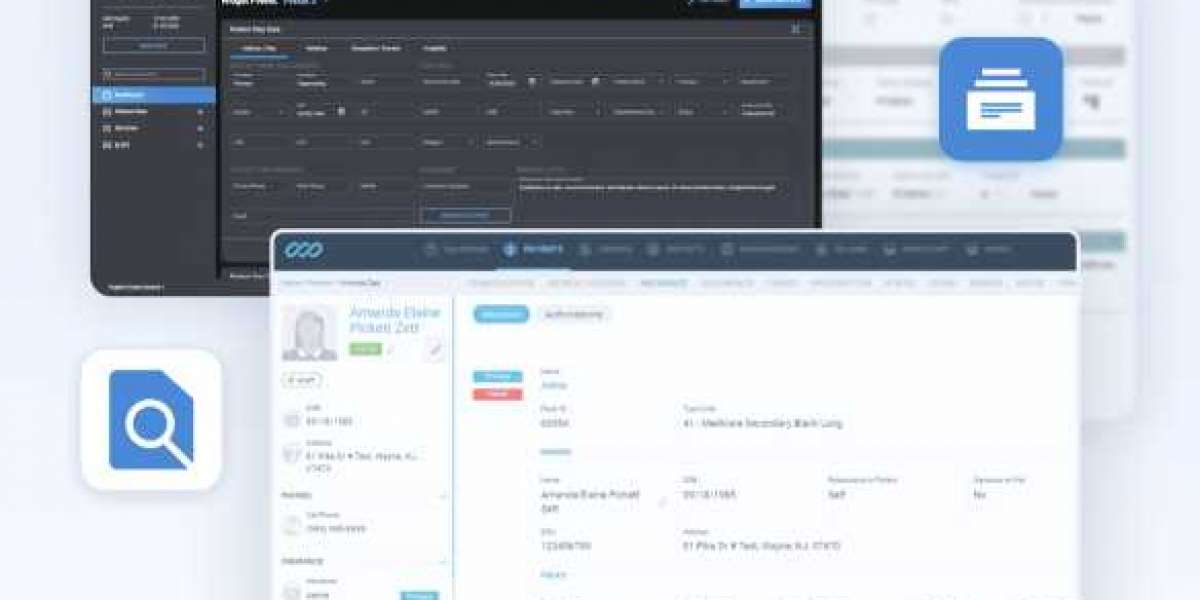In today’s healthcare landscape, Electronic Health Records (EHR) systems have become essential for medical practices. These systems allow healthcare providers to digitize patient records, streamline operations, improve communication, and ensure compliance with regulatory standards. However, developing an EHR system that meets the specific needs of your practice can be a complex process. To ensure that the EHR system you choose or develop aligns with your goals, it's essential to focus on certain key features that are crucial for the system’s success.
This article outlines the critical features to consider when developing an EHR system for your practice. We will also explore how partnering with an EHR development company can help you create a customized solution that integrates seamlessly into your operations.
1. User-Friendly Interface
A well-designed user interface (UI) is crucial for the effective use of an EHR system. Healthcare professionals are often busy, so an intuitive and easy-to-navigate interface can save valuable time and reduce the likelihood of errors. The goal is to ensure that all users, including doctors, nurses, office staff, and administrators, can quickly adapt to the system and perform tasks without unnecessary complexity.
Key UI considerations include:
- Minimalistic Design: Avoid cluttering the interface with unnecessary elements.
- Customizable Dashboards: Allow users to personalize their workspace for easier access to frequently used features.
- Simple Navigation: Ensure that the layout is logical and intuitive, with easy access to patient records, appointment scheduling, and billing functions.
Partnering with an EHR development company experienced in healthcare software development can ensure that the system's design is user-centered and optimized for ease of use.
2. Interoperability with Other Systems
One of the most important features of any EHR system is its ability to communicate and exchange data with other healthcare systems. Interoperability ensures that your practice can share patient information with hospitals, labs, pharmacies, insurance companies, and other entities involved in patient care.
Key aspects of interoperability include:
- Data Exchange Standards (FHIR, HL7, CDA): Ensure your EHR system supports industry standards like Fast Healthcare Interoperability Resources (FHIR), Health Level 7 (HL7), and Clinical Document Architecture (CDA), which make it easier to share data across platforms.
- Integration with Lab Systems and Imaging Devices: Your EHR system should be able to integrate seamlessly with lab results, diagnostic imaging tools, and other medical devices to provide a comprehensive view of the patient’s health.
- Connectivity with Billing and Payment Systems: Ensure that your EHR system can connect to third-party billing software to streamline the billing process.
Working with an EHR development company with expertise in integrations can help you navigate these challenges and ensure that your system is capable of communicating with other essential healthcare technologies.
3. Patient Portal for Accessing Health Records
A patient portal is a critical feature that allows patients to access their health information securely online. Patients should be able to view test results, prescription information, appointment details, and medical history without needing to contact your office. A robust patient portal can significantly enhance patient engagement and satisfaction.
Key features of a patient portal include:
- Access to Medical Records: Patients should be able to view their health history, lab results, and medications.
- Appointment Scheduling and Reminders: The ability for patients to book appointments and receive reminders to reduce no-shows.
- Direct Communication with Providers: A secure messaging system to allow patients to communicate with their healthcare providers about non-urgent issues.
When developing your EHR system, ensure that the EHR development company integrates a secure and user-friendly patient portal. The portal should be easy for patients to navigate and comply with regulations like HIPAA to protect patient data.
4. Customizable Templates and Forms
Medical practices often specialize in specific areas of healthcare, whether it be primary care, dentistry, dermatology, or any other field. To ensure that your EHR system fits the needs of your practice, it should include customizable templates and forms that can be tailored to your workflows.
Key considerations for templates and forms include:
- Specialty-Specific Templates: Custom templates for various specialties, such as dermatology or cardiology, can help reduce documentation time and improve accuracy.
- Customizable Documentation Fields: Allow users to add, modify, or remove fields based on their needs. This enables practices to tailor their EHR system to their specific workflows.
- Easy Data Entry: Ensure that forms are designed for fast, accurate data entry using features like drop-down menus, checkboxes, and autofill options.
An EHR development company can help create customizable templates that fit the unique requirements of your practice, ensuring that the system enhances productivity rather than hindering it.
5. Clinical Decision Support (CDS) Tools
Clinical Decision Support (CDS) tools are designed to assist healthcare providers in making informed decisions about patient care. These tools provide evidence-based recommendations, alerts, and reminders that can help providers avoid errors, reduce patient risks, and improve treatment outcomes.
Key features of CDS tools include:
- Drug-Drug Interaction Alerts: Alerts for potential drug interactions to prevent adverse effects.
- Clinical Guidelines: Recommendations based on clinical guidelines to support decision-making for various medical conditions.
- Diagnostic Assistance: Assistance with diagnosis and treatment options based on patient data.
When developing an EHR system, ensure that the system integrates CDS features that are tailored to the specific needs of your practice. The inclusion of these tools can significantly improve patient care and reduce the likelihood of medical errors.
6. Comprehensive Reporting and Analytics
Data is a powerful tool in healthcare, and a robust EHR system should be capable of generating comprehensive reports and analytics. These reports can help you monitor practice performance, identify trends, and make informed decisions.
Key reporting and analytics features include:
- Patient Population Insights: Gain insights into your patient demographics, health conditions, and treatment outcomes.
- Clinical Performance Metrics: Track key performance indicators (KPIs) related to clinical outcomes, such as patient satisfaction, appointment adherence, and treatment efficacy.
- Financial Reports: Monitor the financial health of your practice, including revenue cycles, outstanding claims, and insurance reimbursements.
Partnering with an EHR development company that specializes in healthcare analytics will ensure that your system can generate the reports you need to optimize your practice’s operations.
7. Security and Compliance
Security and compliance are among the most critical aspects of developing an EHR system. Healthcare providers are required to follow strict regulations like the Health Insurance Portability and Accountability Act (HIPAA) to ensure that patient data is protected.
Key security and compliance features include:
- Data Encryption: Ensure that patient data is encrypted both at rest and in transit to protect against unauthorized access.
- Role-Based Access Control (RBAC): Limit access to sensitive patient data based on user roles, ensuring that only authorized individuals can access certain information.
- Audit Trails: Implement audit trails that track who accessed patient data, what changes were made, and when they occurred.
Compliance with HIPAA and other regulatory standards is non-negotiable, and an EHR development company can help ensure that your system meets these requirements while maintaining high levels of data security.
8. Mobile Access and Remote Capabilities
In an increasingly mobile world, healthcare providers need access to patient data on the go. A mobile-friendly EHR system can provide practitioners with the flexibility to access patient information from anywhere, whether they are in the office, at the hospital, or on the move.
Key features for mobile access include:
- Mobile App or Responsive Web Interface: Develop a mobile app or responsive web interface that allows access to the EHR system on smartphones and tablets.
- Cloud-Based Access: Ensure that your system is cloud-based, enabling access from multiple devices without the need for on-site infrastructure.
- Offline Capabilities: Allow healthcare providers to access essential patient information even when internet connectivity is unavailable.
Collaborating with an EHR development company that has experience in mobile and cloud-based systems will ensure that your practice has the flexibility to provide high-quality care regardless of location.
9. Billing and Coding Integration
Billing and coding are essential components of healthcare administration. A good EHR system should integrate with billing software and help streamline the coding process to ensure accurate claims and reimbursement.
Key billing and coding features include:
- Automated Coding: The system should suggest the correct medical codes based on patient diagnoses and treatments.
- Billing Integration: Integrate the EHR system with your existing billing software to reduce errors and simplify the revenue cycle management.
- Claims Management: Track the status of insurance claims and flag any denials or issues for follow-up.
An EHR development company can help build a seamless integration between your EHR system and billing software, reducing administrative burdens and improving cash flow.
Conclusion
Developing an EHR system tailored to your practice’s needs is a significant investment, but the right system can streamline your workflows, improve patient care, and ensure regulatory compliance. Key features such as user-friendly design, interoperability, patient portals, and CDS tools are essential for creating an effective system. Additionally, security, mobile access, and billing integration are necessary for modern healthcare practices.
Partnering with a trusted EHR development company can provide the expertise needed to create a custom solution that aligns with your practice’s unique requirements. With the right EHR system, you can improve efficiency, enhance patient outcomes, and stay ahead in a competitive healthcare environment.







